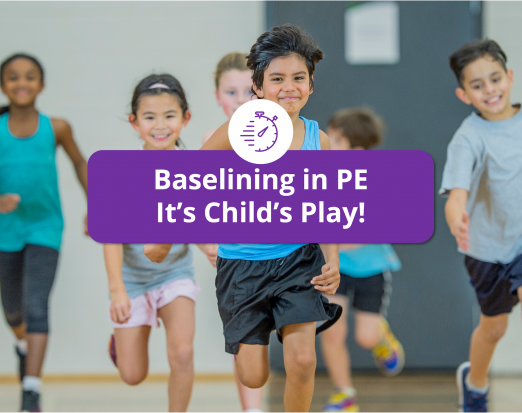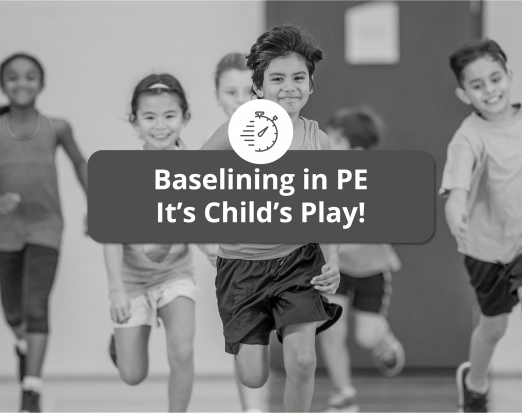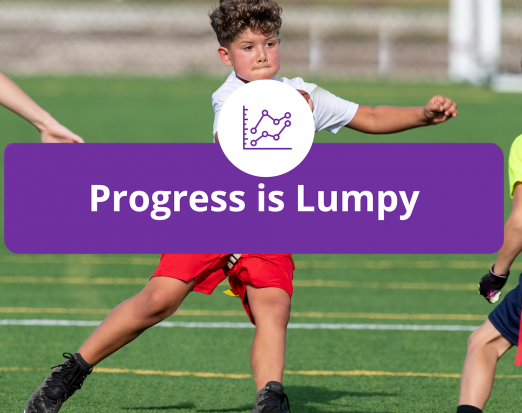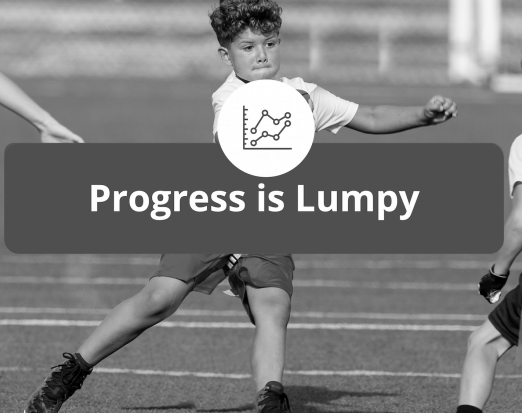5 Easy Ways to Help Your Pupils Get Active for 60mins a Day!
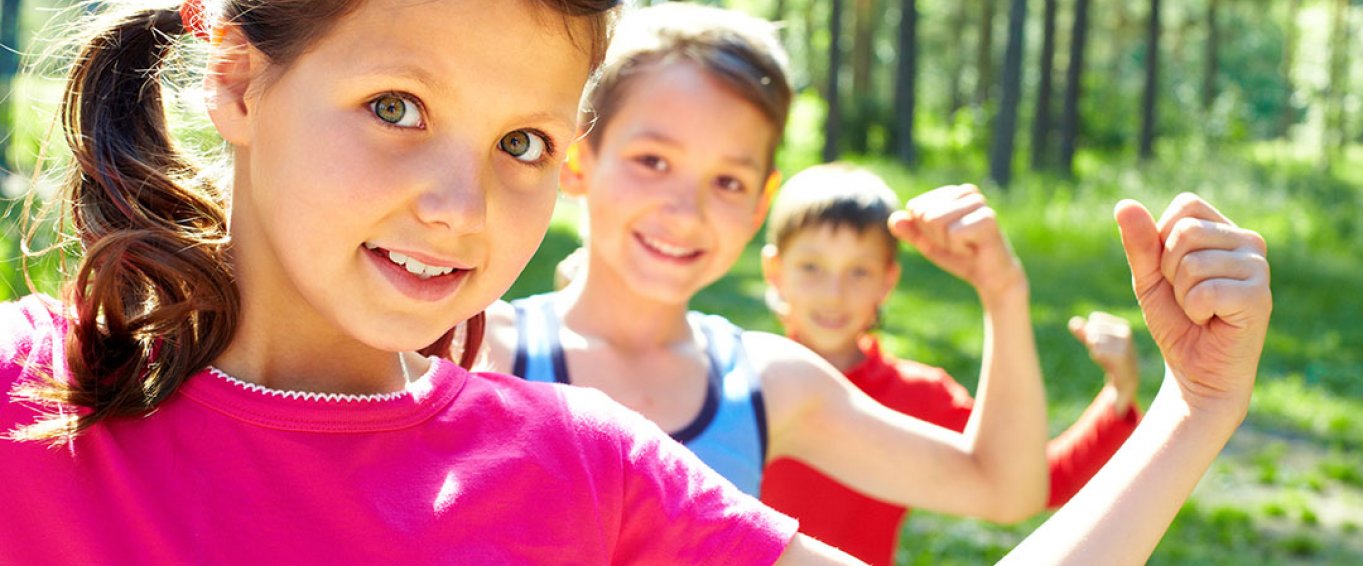
The UK's Chief Medical Officer says all children should engage in moderate to vigorous physical activity for at least 60mins every day. Yet, most schools deliver just two hours of timetabled PE per week. So, how can we ensure pupils meet the daily activity targets needed to stay fit and healthy? What's the best way to get young people sitting less and moving more at school?
According to Youth Sport Trust and other health organisations, the solution lies with low maintenance, high impact bursts of movement or classroom 'activity breaks.' It's a sentiment echoed by child development experts who not only stress the impact of physical activity but also its endless versatility. Might increasing physical activity levels be simpler if we treated movement like reading or writing: as a habitual process that's integral to the success of learning routines?
To tackle child obesity, schools are urged to activate lessons and introduce movement to all curriculum subjects. While there are no hard and fast rules for how to do this, the chunking method offers most potential. A five minute activity session before lessons start. A dance off in the afternoon. Standing up to answer questions. Walking around a learning space as part of structured tasks. Physical activity doesn't have to mean kicking footballs or jumping hurdles.
It can just mean moving more, sitting less and finding ways to activate familiar routines!
5 Creative Ways to Add Movement to Your Classroom
1. Exercise Ball Exchange
Replacing traditional school chairs with gym style exercise/therapy balls is a novel way of both controlling unwanted movement (fidgeting) and gently activating seated lessons. It's a simple change and while it won't be suitable for every classroom, it's been shown to have a demonstrable impact on concentration levels, particularly for children with ADHD and other attention deficit disorders.
As it's near impossible to sit completely still on an exercise ball, kids' bodies remain active even though they barely notice it happening. They continually tense their muscles and, at the same time, satisfy the part of the brain that's intent on wandering. Although it sounds counterproductive, it's actually a common strategy for reducing disruptive classroom behaviours.
How to Implement: We're not suggesting you replace every chair with a big rubber exercise ball! Schools that use this strategy tend to position a handful (1-4) of exercise balls and rotate them steadily throughout the day. This gives all pupils a chance to 'workout' while sat down.
Adaptation: Pupils with mobility issues - for whom an exercise ball may be unsuitable - can swap it for a handheld stress or fidget toy.
2. Jumping Jacks
This is another super simple strategy that works with pupils of any age. During review sessions, when you're recapping what's been learned, have children stand up next to their desks.
Instead of raising a hand to volunteer an answer, ask your pupils to perform a simple movement (for example, a squat or a full circle spin). You can even award points to encourage participation.
How to Implement: Agree on an assigned movement before the lesson starts. Choose a movement or action that is suitable for the learning environment. If space is limited, try a hop or shimmy shake.
Adaptation: There are all kinds of ways to adapt this strategy when mobility is an issue. You could ask the pupil(s) in question to throw a beanbag at a target (paper tray, wastebasket, spot on the wall) or just tap out a simple beat on the table.
3. Dance Move of the Day
As little as five minutes of vigorous movement can increase pupils' focus, memory recall and classroom conduct. It means teachers shouldn't find it hard to squeeze impactful 'activity breaks' into every school day. In fact, adding a five minute 'workout' to the start or end of every lesson would set kids well on the way to meeting that 60min activity target.
It's why members of our Healthy Schools Programme get access to a library of dance themed videos. These fun tutorials last only 3-4 minutes to ensure easy integration with even the busiest class schedules. By focusing on fundamental movement skills, these mini workouts can increase your pupils' physical literacy and movement competence.
How to Implement: Watch one dance video each day. Spend 5-10mins helping pupils practise the new step or move. Then, at the end of the week, watch the final video to see how all the moves combine to form a complete dance routine!
Adaptation: Dance Move of the Day videos are easy to adapt for a variety of pupil abilities. Children might focus on arm motions, perform the steps more slowly or create different moves. We think SENs and disabilities should be discussed openly. Why not start a class discussion and ask for suggestions on step modifications?
4. Physical Activity Through the Ages
It's easier than you think to link physical activity to core subjects. Teaching a geography lesson? Every region of the world has traditional dances, sports, games and activities. The same goes for historical eras. Think twenties swing, eighties aerobics or seventies bodybuilding.
As you discuss different countries, events or time periods, make connections to relevant physical activities or pastimes. Toss Scottish 'cabers.' Get silly with salsa. Throw a headband on and try jazzercize. Be creative. Find the joy in active learning.
How to Implement: When our Healthy Schools need inspiration, they can log in to their portal and download a Bertie Bunny Lesson Plan. Each lesson plan story integrates reading, listening and information recall tasks with opportunities for active participation.
Adaptation: You can adapt this classroom strategy in a thousand different ways! Remember to ask pupils with specific needs how they'd like to participate. It's easy to forget, in the rush to accommodate children with SENs, that it can be as easy as...asking what it is they want.
5. The Roving Reviewer
It can be helpful for pupils to hear feedback and ideas from one another, as well as from their teacher. This type of peer review is a tried and tested strategy, but it's often overlooked as an opportunity for movement.
In an active classroom, pupils should be encouraged to visit one another's desks for peer discussions and feedback. Encourage children to stand when chatting and, where relevant, use physical actions or motions to help their classmates understand key concepts.
How to Implement: The important thing is to disrupt sitting time by getting your pupils up on their feet. You can do this in any number of ways; hold a standing discussion at the front of class, create roving teams that spend 1-3mins talking with one another, have children walk and talk or even introduce a movement rule (Walk and Talk, Yap and Tap, etc.)
Adaptation: If it's not safe for a pupil to move about the room, have them pass or toss a beanbag to their groupmates as they talk.
